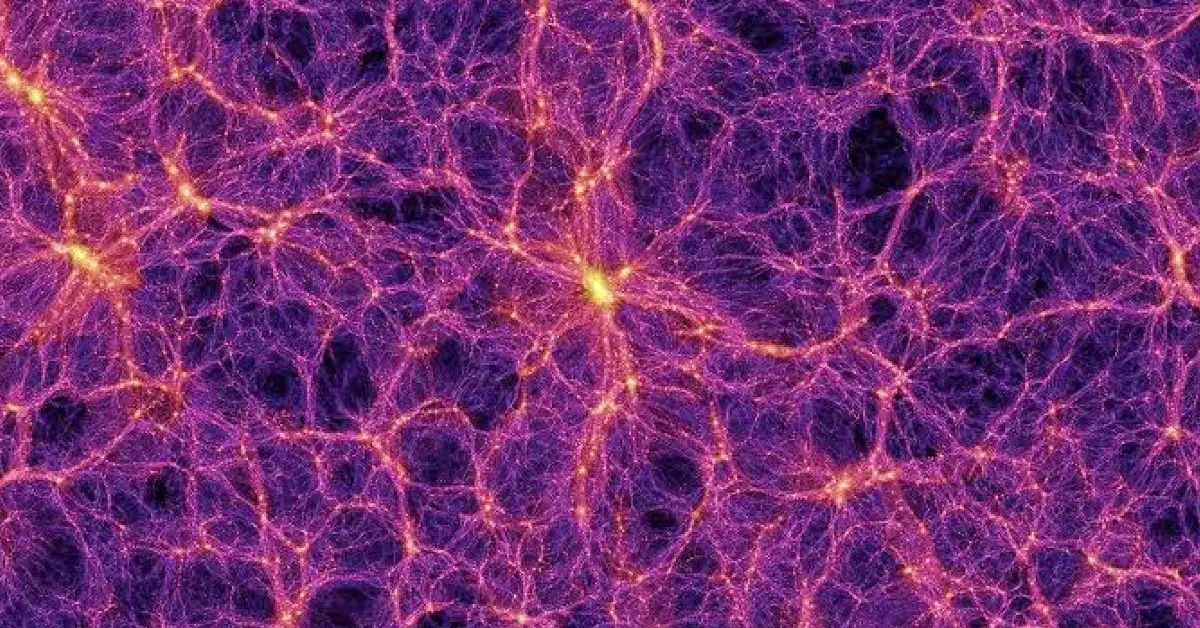The universe is a vast expanse, filled with countless celestial bodies and intriguing phenomena. Among the various cosmic mysteries that have puzzled astrophysicists for decades, the origin and behavior of magnetic fields hold a prominent place.
Magnetic fields play a vital role in shaping cosmic structures and influencing the movement of charged particles throughout space. Despite their significance, understanding the origins of these magnetic fields has proven to be a daunting challenge.
The Origin of Magnetic Fields
Traditional explanations for the presence of magnetic fields in space have been proposed, yet they leave certain aspects unexplained. The standard theory suggests that magnetic fields could be remnants from the early universe or generated by the motion of electrically charged particles.
While these concepts provide a foundation, they fail to fully elucidate the complexity of magnetic fields observed in astrophysical environments.
Grown from Scratch: A New Approach
Recent advancements in laboratory research have introduced a novel approach to studying cosmic magnetism. Scientists are now creating simulated magnetic fields from scratch in controlled laboratory settings.
This revolutionary technique allows researchers to recreate the extreme conditions of space and observe the behavior of magnetic fields in unprecedented detail.
By simulating magnetic fields in the lab, scientists can explore various scenarios and manipulate the parameters to gain insights into their formation and evolution. This approach has opened up new avenues for understanding cosmic magnetism and has the potential to unlock the secrets of magnetic fields that have remained elusive until now.
Understanding the Cosmic Mystery
The ability to simulate magnetic fields has led to significant breakthroughs in astrophysics. By examining astrophysical phenomena through the lens of these simulated magnetic fields, researchers have gained fresh perspectives on galactic structures, star formation, and cosmic evolution.
One of the key revelations is the impact of magnetic fields on the dynamics of cosmic plasma. These fields play a crucial role in shaping the behavior of charged particles, affecting the formation of stars, and influencing the evolution of galaxies. Understanding these processes is crucial for comprehending the larger cosmic picture.
The Role of Supercomputers
Simulating magnetic fields in such intricate detail requires immense computational power. Supercomputers are at the heart of this research, as they perform complex calculations to model the behavior of magnetic fields accurately. The synergy of advanced simulations and observational data has led to a deeper understanding of the cosmos.
Through these simulations, scientists have been able to validate and refine existing theories, as well as propose new hypotheses that challenge conventional wisdom. The synergy of theoretical and observational studies has created a robust foundation for investigating the mysteries of cosmic magnetism.
Implications for Astronomy and Astrophysics
The newfound comprehension of magnetic fields has far-reaching implications for various astronomical phenomena. Studying cosmic magnetism helps astronomers gain insights into star formation processes, black hole behavior, and even the distribution of cosmic rays and high-energy particles.
Furthermore, this research could offer solutions to long-standing cosmic enigmas, such as the missing matter problem. A considerable portion of the universe’s matter remains undetectable by current methods, and magnetic fields might play a role in unraveling this mystery.
Real-World Applications
The advancements in simulating magnetic fields not only enhance our theoretical understanding but also have practical applications. In fusion energy research, understanding and controlling magnetic fields are critical for achieving sustainable nuclear fusion, which holds the promise of clean and abundant energy for humanity.
Additionally, simulated magnetic fields are valuable for spacecraft navigation and protection. Spacecraft traveling through the cosmos encounter cosmic radiation, and comprehending magnetic fields can aid in designing shielding mechanisms to safeguard both crew and equipment.
Future Prospects
The potential of simulated magnetic fields to explain cosmic mysteries is still in its early stages. As research progresses, there is hope for more significant breakthroughs that could reshape our understanding of the universe. Collaborations between laboratory researchers and astrophysicists are vital for sharing knowledge and driving the field forward.
While numerous questions have been answered, many others remain unanswered. The journey to demystify cosmic magnetism is an ongoing one, and the collective efforts of the scientific community will undoubtedly lead to fascinating discoveries in the years to come.
Conclusion
Simulated magnetic fields created from scratch have emerged as a powerful tool in the study of cosmic magnetism. By bridging the gap between theory and observation, these simulations have shed light on the intricate workings of magnetic fields in space.
They have deepened our understanding of galactic structures, star formation, and cosmic plasma dynamics. Moreover, this research holds immense promise for practical applications, such as fusion energy and spacecraft protection.
As scientists continue to push the boundaries of knowledge, the cosmic mystery of magnetic fields is slowly unraveling. With cutting-edge technologies and collaborative efforts, humanity is edging closer to comprehending one of the universe’s most enigmatic phenomena.
FAQ
- What is the significance of simulated magnetic fields in cosmic research? Simulated magnetic fields provide a controlled environment for studying cosmic magnetism, allowing scientists to observe its behavior in intricate detail. This approach has led to a deeper understanding of magnetic fields’ influence on celestial phenomena and has potential applications in various fields.
- How do scientists create simulated magnetic fields? Scientists use advanced supercomputers to model and simulate the behavior of magnetic fields under various conditions. These simulations are based on mathematical equations and incorporate observational data to ensure accuracy.
- Can simulated magnetic fields help us understand dark matter? Yes, simulated magnetic fields offer insights into the distribution and behavior of cosmic matter, including dark matter. Understanding magnetic fields may play a role in solving the mystery of missing matter in the universe.











